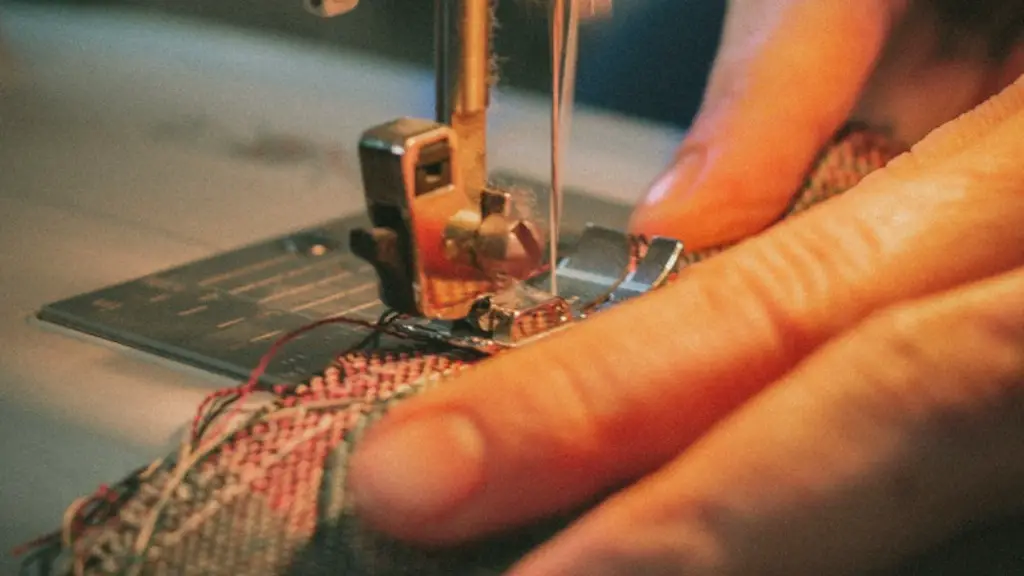Singer Featherweight sewing machines are iconic vintage machines from the 20th century. They are popular with quilters and dressmakers who appreciate their small size and lightweight frame. Many sewing enthusiasts consider them to be the best portable machines – and for good reason. They make excellent stitches and can handle delicate fabrics with ease. But like any mechanical device, they will eventually break down or need repair.
If you own a Singer Featherweight, you’ll want to know how to keep it running like new. Luckily, maintaining this type of machine is relatively easy and straightforward. Here are some tips to help you keep your machine running in top condition.
Check Your Fabric
The most important thing to keep in mind when you’re working with a Singer Featherweight is the type of fabric you’re stitching. These machines can handle light- to medium-weight fabrics, but anything heavier might cause the machine to strain and result in poor stitch quality. Be sure to check the fabric type before you begin sewing to avoid any issues.
Clean the Bobbin
Like all sewing machines, the Singer Featherweight needs regular cleaning. This will keep it running smoothly and ensure that it’s able to make precise stitches. To clean your machine, you should start by cleaning the bobbin. You can do this by removing it from the machine and wiping it down with a damp cloth. If there’s any thread stuck to the bobbin, it’s best to remove it with tweezers. Once you’ve cleaned the bobbin, you should lubricate the machine as this will help it run more smoothly.
Check the Belt Tension
The Singer Featherweight has a belt-driven system that needs to be checked regularly. To check the belt tension, you can look at the belt itself. If it’s loose, then you’ll need to tighten it. This can be done with a wrench and a pair of pliers. Once the belt is properly tensioned, you’ll need to check the machine’s stitch length. This can be adjusted with the tension wheel. Be sure to check the machine’s instructions so you know how to properly adjust the stitch length.
Replace Singer Featherweight Parts
If your Singer Featherweight isn’t functioning correctly, you may need to replace some parts. These include needles, bobbins, presser feet, and thread guides. Replacement parts can be found online or in specialty sewing stores. Additionally, some Singer Featherweight machines need special belts that must be purchased from a specialist. It’s important to try to find genuine Singer parts as this will ensure that your machine runs as well as it did when it was new.
Repair Singer Featherweight Machines
If your Singer Featherweight is not functioning correctly, then you may need to have it repaired. There are a number of repair services available, including those offered by Singer itself. Additionally, many local sewing stores offer repair services, and some may even specialize in Singer Featherweight repairs. Be sure to ask questions, as you’ll want to make sure that you’re getting the highest quality service.
Store Your Singer
When you’re not using your Singer Featherweight, it’s important to store it in a safe and secure place. You’ll want to keep it away from extreme temperatures, direct sunlight, and moisture, as all of these can cause damage to the machine. Additionally, you should make sure that your machine is properly covered and that there’s no dust or debris on the inside of the machine. Proper storage is key to ensuring that your Singer is in top working order.
Maintain Your Singer Featherweight
In order for your Singer Featherweight to run properly, you will need to maintain it. This includes checking the fabric type before you begin sewing, cleaning the bobbin, checking the belt tension, replacing parts, repairing the machine, and storing the machine properly. All of these steps will ensure that your machine is running as smoothly as possible, and that it will last for many years to come.
Adjust the Thread Tension
One of the most common problems with a Singer Featherweight machine is thread tension. If the tension is too tight, the machine will not produce a proper stitch. To adjust the thread tension, you’ll need to carefully adjust the tension wheel. Be sure to refer to your machine’s manual for instructions on how to do this. Once the tension is adjusted, you should test the machine to make sure that it’s working correctly.
Inspect the Machine
Inspecting your Singer Featherweight on a regular basis is an important part of maintaining the machine. Before you start sewing, it’s important to check the machine for any visible signs of wear or damage. This includes inspecting the belt, checking the bobbin, and looking for any signs of visible wear on the machine itself. Additionally, you should check for any signs of missing or broken pieces, as well as any dirt or debris inside the machine.
Assemble and Prepare the Machine
Installing your Singer Featherweight is relatively easy, as long as you follow the instructions that come with it. Before you assemble the machine, you should read the instruction manual and make sure that you understand how to properly assemble the machine. Additionally, you should clean the machine before you begin assembling it, as this will help to prevent any damage during installation. It’s also important to lubricate the machine before you begin stitching to ensure that it works smoothly.
Replace Attachments and Accessories
The Singer Featherweight comes with a variety of attachments and accessories, such as the presser foot and the needle guard. These can be replaced if they become worn or broken. Additionally, the machine may come with various replacement parts, such as bobbins and thread guides. These can also be replaced if they become worn or damaged. It’s important to replace these parts and accessories as soon as you notice any problems, as this will help to keep your machine running smoothly.



